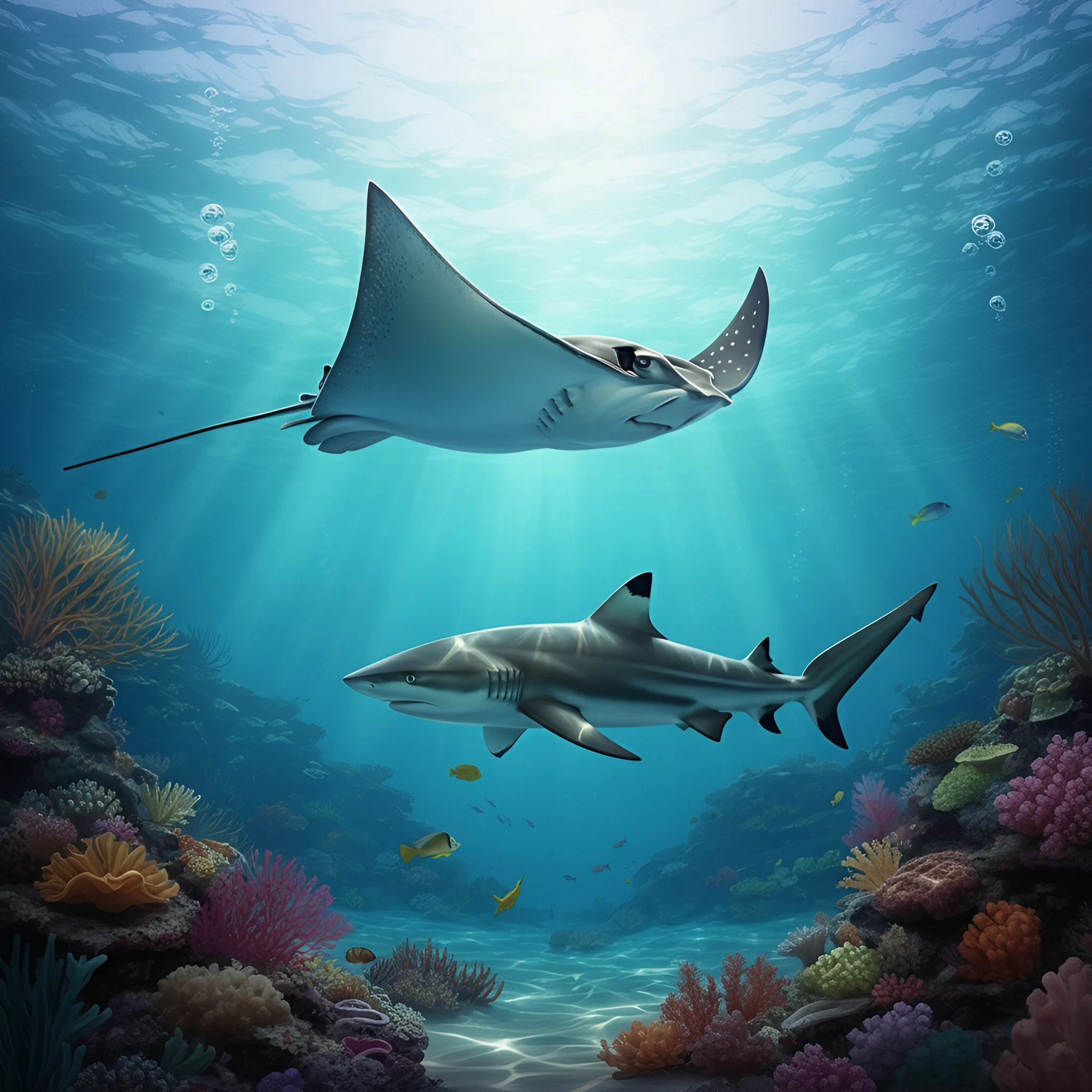The term “sting ray shark” might sound unusual, sparking curiosity in those unfamiliar with marine taxonomy. While it may suggest a hybrid, “sting ray shark” is not an officially recognized species or classification. Instead, the term likely refers to the shared evolutionary link between stingrays and sharks, unified under the elasmobranch subclass. These fascinating creatures exhibit a vast array of adaptations that make them masters of the marine world.
Join us as we explore the evolutionary relationship, unique behaviors, and conservation concerns surrounding stingrays and their shark relatives.
Clarifying the “Sting Ray Shark” Misconception
Though stingrays and sharks are not hybrids, they share common ancestry in the elasmobranch subclass, which evolved around 350 million years ago. This group includes stingrays, sharks, and skates, distinguished by their skeletons made of cartilage instead of bone.
For those looking for parallels, stingrays are essentially flattened relatives of sharks with specialized characteristics adapted for bottom-dwelling habitats. Their diversity makes “sting ray shark” a unique umbrella term for discussing their close kinship.
Evolutionary Link Between Rays and Sharks
The evolutionary divergence between stingrays and sharks is significant. To put it into perspective, the genetic split between these two occurred twice as long ago as the divergence between humans and the platypus. However, their shared lineage has resulted in fascinating similarities.
- Cartilaginous Skeletons: Both species lack bony skeletons, enabling greater flexibility and streamlined movement in water.
- Electrosensory Organs: Using electroreceptors called Ampullae of Lorenzini, they can detect the electrical signals of prey and potential threats.
- Efficient Reproduction: Both rays and sharks employ ovoviviparous reproduction, where embryos develop inside egg sacs within the mother’s body until ready for birth. Stingrays, in particular, add intrigue with the rare occurrence of parthenogenesis (virgin birth), a phenomenon highlighted in science news with examples like Charlotte, the stingray (source).
Unique Adaptations of Stingrays
Stingrays stand apart with specialized features that allow them to excel in their environments. From their flattened bodies to their prowess in camouflage, every adaptation suits their bottom-dwelling lifestyle.
Key Adaptations Include:
- Flattened Bodies
Stingrays’ bodies are disc-shaped, helping them glide along the seabed effortlessly. Their expanded pectoral fins form the iconic “wings,” ideal for quick movements in shallow waters.
- Venomous Barbs
One of their most notable defenses is their venomous barb (a modified tail spine). When threatened, stingrays can whip their tails to ward off predators. However, they are typically docile creatures and resort to this defense only when provoked.
- Camouflage Mastery
Stingrays possess coloration that mirrors their surroundings, allowing them to blend seamlessly with sandy or rocky ocean floors.
- Filter Feeding and Hunting
Stingrays feed on a wide variety of organisms, from small fish to crustaceans. Some species use suction generated by their mouths to uncover buried prey.
Shared Threats and Conservation Challenges
Both stingrays and sharks face increasing threats globally due to habitat degradation, overfishing, pollution, and climate change.
Why Conservation is Essential:
- Overexploitation for shark fins and ray wings has led to a severe population decline in elasmobranchs. Stingrays, often considered bycatch in fishing operations, suffer significant losses.
- Habitat loss, particularly in coral reefs and mangroves, removes critical breeding and feeding grounds.
- Misunderstandings about these creatures’ behaviors often lead to unwarranted fear, further reducing public support for conservation initiatives.
According to experts, preserving these species is crucial for maintaining marine ecosystems. Stingrays and sharks regulate prey populations, ensuring ecological balance.
Parthenogenesis in Stingrays
A fascinating discovery in recent years involves stingrays’ capability for parthenogenesis. Known as a “virgin birth,” this phenomenon occurs when females reproduce without any genetic contribution from males.
Studies have shown that species like stingrays can turn to parthenogenesis when environmental conditions make finding a mate increasingly challenging. Notable examples, such as Charlotte the stingray, highlight how this natural phenomenon could serve as a survival mechanism in declining populations.
Parthenogenesis may play a role in sustaining endangered species, offering hope in the fight against their dwindling numbers. Further research could provide revolutionary insights for conservation biology.
How You Can Help
To support stingray and shark conservation:
- Reduce your carbon footprint to help mitigate climate change’s impact on marine habitats.
- Advocate for bans on unsustainable fishing practices that endanger rays and sharks.
- Support aquariums and organizations focused on elasmobranch research and conservation efforts.
By raising awareness and taking action, you can help protect these often-misunderstood creatures and their vital role in ocean ecosystems.
Final Thoughts
The intersection of stingrays and sharks under the “sting ray shark” lens reveals a captivating story of shared evolution and survival. With their unique adaptations and behaviors, these marine marvels continue to inspire scientists, conservation advocates, and marine enthusiasts alike.
If you’re passionate about these creatures, explore more about their world to advocate for their protection. The ocean wouldn’t be the same without them.
Suggested Image Ideas:
- Header Image
A visually striking stingray gliding across the seabed, surrounded by marine life.
- Evolutionary Diagram
A simplified tree showing the divergence of rays and sharks from their shared ancestor.
- Parthenogenesis Highlight
An educational graphic depicting the process of parthenogenesis.
- Conservation Infographic
Symbols and stats highlighting threats to elasmobranch species and how to help.








